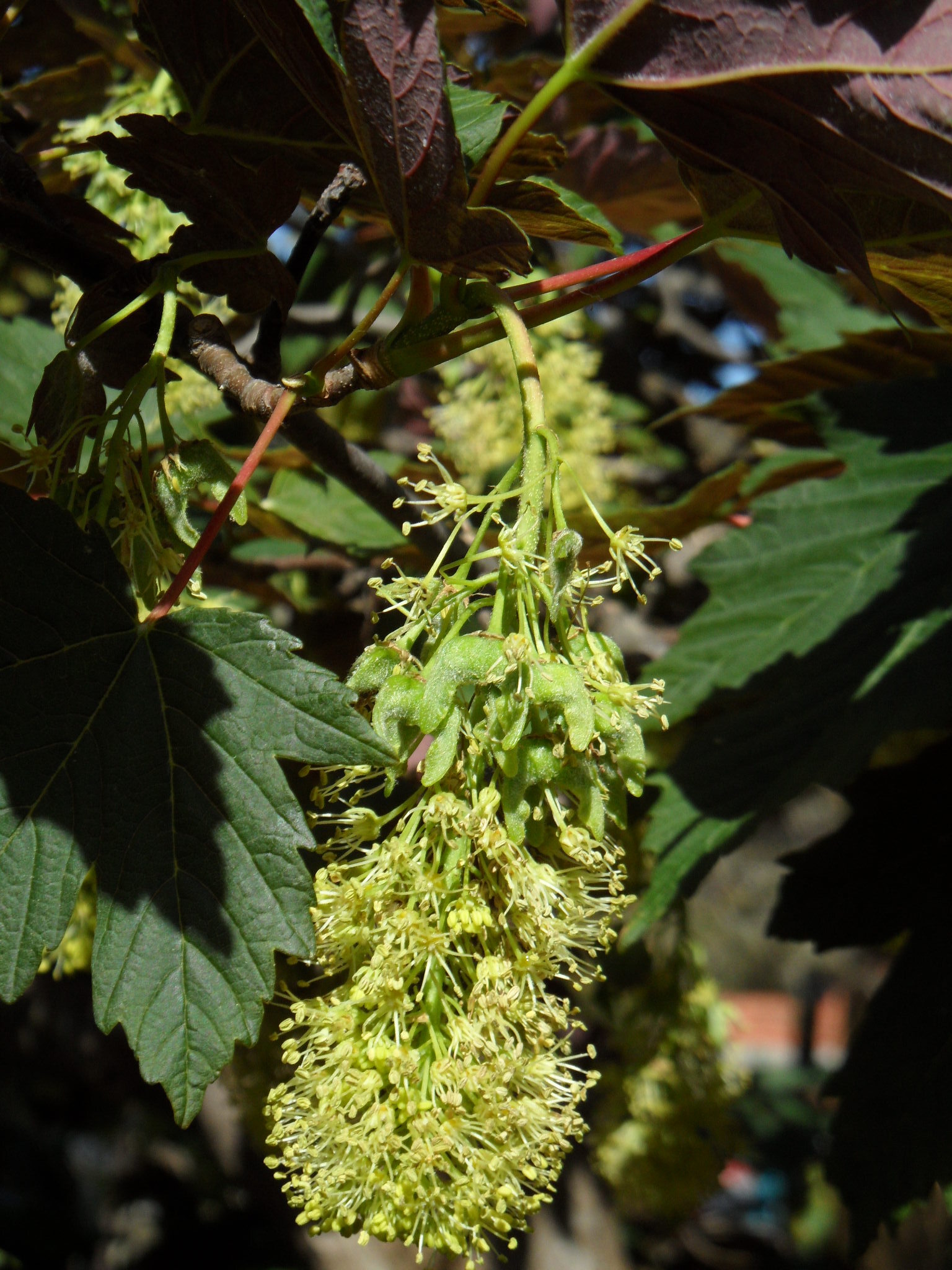
Broad-crowned deciduous tree, 15-30 m tall, with bark peeling in small flakes. Leaves with 5 acute lobes, cordate at the base and with large teeth, dark green above, waxy-blue below; yellow in autumn. Flowers in pendulous racemes appearing after the leaves. Fruit 2.5-5 cm wide with wings widely diverging.
Cultivars may have hairy or reddened leaves below.
Europe, W Asia.
Flowers with or after leaves, teeth directed outwards, i.e. dentate not serrate, cf. A. rubrum.
ACT: Yarralumla (Westbourne Woods). VIC: Daylesford (Bot. Gds); Prahran (Victoria Gds).
Source: (2002). Aceraceae. In: . Horticultural Flora of South-eastern Australia. Volume 3. Flowering plants. Dicotyledons. Part 2. The identification of garden and cultivated plants. University of New South Wales Press.

Acer pseudoplatanus 'Atropurpureum'
Leaves reddish below. Arises frequently among seedlings. Listed in 19th century.Syn 'Purpureum', 'Spaethii'. Specimens: Vic: Caulfield (Park).
Acer pseudoplatanus 'Brilliantissimum'
Slow growing. Leaves brick orange at first, becoming yellowish later and finally pale green below. Generally grown as a standard. Probably originating UK at end of 19th century.
Acer pseudoplatanus 'Leopoldii'
New growth pink and yellow. Leaf densely mottled with pale yellow mosaic. Named by Vervaene, c. 1864, after King Leopold I of Belgium. Specimens: Vic: Geelong (Bot Gds). Tas: Hobart (St Davids Park); Plenty (Salmon Ponds).